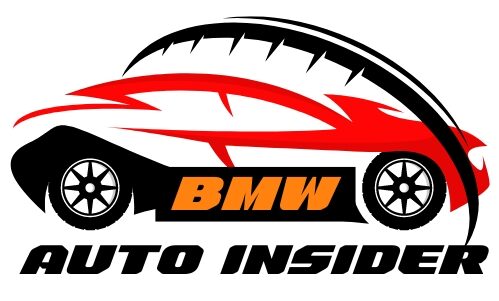FAQs & Help
Write to us:
Navigating Common BMW Ownership Queries
Unlock the secrets to a seamless BMW ownership experience. Get expert insights into frequent questions and concerns. Master the intricacies of your ultimate driving machine.
BMW recommends changing the engine oil and filter every 7,500 miles or once a year, whichever comes first. However, this interval may vary depending on your driving conditions and the specific model. Always refer to your owner’s manual or consult a certified BMW technician for the most accurate service recommendations.
The recommended tire pressure for your BMW can be found on a sticker located on the driver’s door jamb or in the owner’s manual. It’s essential to maintain the correct tire pressure for optimal performance, handling, and fuel efficiency. Keep in mind that tire pressures may need to be adjusted based on factors such as load and weather conditions.
The Service Engine Soon light is an indicator that your BMW’s on-board diagnostics system has detected an issue. To reset this light, you’ll need to use a specialized diagnostic tool to clear the fault codes and reset the system. We recommend having this done by a professional BMW technician to ensure the underlying issue is properly addressed.
BMW provides a comprehensive maintenance schedule based on your vehicle’s mileage and age. This schedule includes services such as oil changes, brake fluid flushes, spark plug replacements, and more. Refer to your owner’s manual or consult a BMW service advisor for the specific maintenance requirements for your model.
FAQs:
Mastering Your BMW’s Features and Maintenance
Dive deep into the advanced technologies and systems of your BMW. Gain invaluable tips for optimal performance and longevity. Elevate your skills in caring for your prized automotive possession.

To pair your smartphone with the BMW iDrive system, first ensure that Bluetooth is enabled on your phone. Then, navigate to the Communication menu on your iDrive display, select “Bluetooth,” and follow the on-screen prompts to search for and connect to your phone. The system may prompt you to enter a pairing code, which is typically provided in your owner’s manual or on the iDrive display.
BMW’s xDrive is an intelligent all-wheel-drive system that distributes power between the front and rear wheels for optimal traction and handling in various driving conditions. The sDrive system, on the other hand, is a rear-wheel-drive configuration, which is more traditional for BMW and offers a sportier driving experience. xDrive provides enhanced stability and grip, particularly in inclement weather or on slippery surfaces, while sDrive offers a more dynamic and engaging driving experience on dry roads.
Breaking in new performance tires is crucial to ensuring their longevity and optimal performance. Start by driving at moderate speeds (under 55 mph) for the first 100 miles, avoiding hard acceleration, braking, or cornering. After the initial break-in period, gradually increase your speeds and begin introducing more spirited driving. However, avoid pushing the tires to their limits until they have at least 500 miles of use. This gradual break-in process allows the tires to achieve proper heat cycling and helps the rubber compounds and tread patterns settle properly.
BMW typically recommends using premium unleaded gasoline with an octane rating of 91 (or higher) for most of their models. However, some high-performance models, such as the M vehicles, may require premium unleaded with an octane rating of 93 or higher. Always refer to your owner’s manual for the specific octane requirements for your BMW model, as using lower-octane fuel than recommended can lead to engine knocking, reduced performance, and potential damage.
BMW Connected Drive is a suite of digital services and features designed to enhance your driving experience. To access these services, you’ll need to create a BMW ConnectedDrive account and pair your vehicle with your account. Once set up, you can access features like real-time traffic information, remote services (lock/unlock, vehicle finder), concierge services, and more through the iDrive system or the BMW Connected app on your smartphone.
Some common signs that your BMW’s battery may need replacement include:
- Dim or flickering headlights
- Electrical accessories (radio, windows, etc.) functioning intermittently or slowly
- Engine cranking slowly or having difficulty starting
- Battery warning light on the dashboard
- Corrosion or leakage around the battery terminals If you notice any of these symptoms, it’s best to have your battery tested and replaced if necessary by a qualified BMW technician.
Programming or adding a new key fob to your BMW typically requires specialized diagnostic equipment and software. The process involves syncing the new key fob to your BMW’s electronic control modules. Due to the complexity and security measures involved, it’s highly recommended to have this done by a certified BMW technician or dealership. They have the necessary tools and expertise to ensure the key fob is properly programmed and functioning correctly with your vehicle’s systems.
Using BMW-approved parts and fluids offers several benefits:
- Guaranteed compatibility and fit for your specific BMW model
- Adherence to strict quality and performance standards set by BMW
- Preservation of your vehicle’s warranty coverage
- Optimal performance, longevity, and reliability
- Reduced risk of premature wear or damage to other components While non-approved parts and fluids may be less expensive, they may not meet BMW’s stringent requirements and could potentially compromise the safety and performance of your vehicle.
Proper maintenance of your BMW’s leather upholstery is essential to preserve its luxurious appearance and longevity. Start by regularly vacuuming the seats to remove dirt and debris. Use a high-quality, pH-balanced leather cleaner and conditioner specifically designed for automotive use. Gently clean the leather with a soft cloth or brush, and follow up with a leather conditioner to nourish and protect the material. Avoid using harsh chemicals or abrasive cleaners, as these can damage the leather. Additionally, park your BMW in shaded areas when possible to minimize sun exposure and drying.
Some common issues to be aware of in high-mileage BMWs include:
- Cooling system problems (leaks, worn water pumps, etc.)
- Suspension and steering component wear (control arms, tie rods, etc.)
- Oil leaks from various gaskets and seals
- Electrical gremlins (wiring issues, sensor failures, etc.)
- Transmission and differential fluid leaks or slippage
- Exhaust system leaks or corrosion Regular maintenance and inspections are crucial for identifying and addressing potential issues before they escalate. Additionally, keeping detailed service records can help identify patterns and anticipate upcoming maintenance needs.
